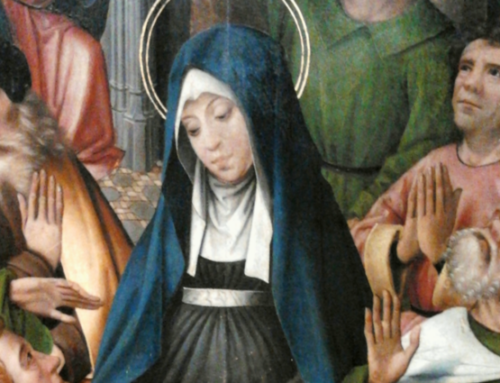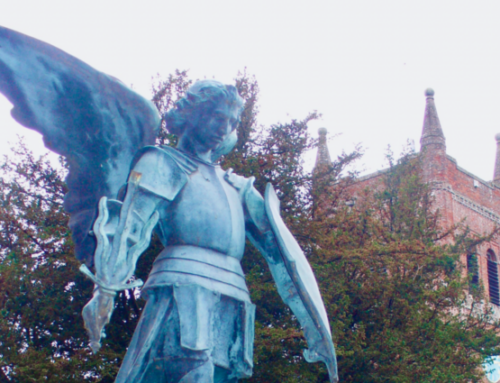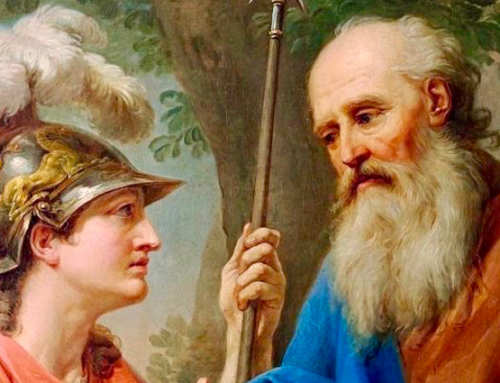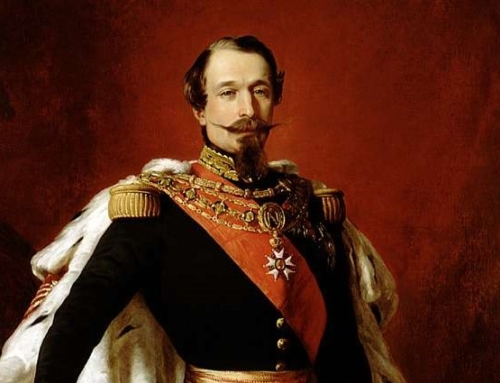How does religion act as a driving force of politics and culture? Christoper Dawson argued that “we cannot understand the inner form of a society unless we understand its religion,” and we cannot make sense of any culture or its achievements without knowing the religious inspiration from which its creativity flowed.
 Imagine a diagram consisting of a circular pattern in which there are three points. The three aspects listed are Religion, Politics, and Culture. The arrows between the points are bi-lateral signifying that the three points influence each other and flow from each other. Religion flows towards politics and culture, and these points flow back upon religion, and so it is with each aspect of reference. Now, imagine two outlying arrows that point directly from religion to culture and politics, signifying religion undergirding both politics and culture in a more profound sense than they inform religion. This imaginative device is a diagrammatic view of Christopher Dawson’s explication of historical and cultural movements.
Imagine a diagram consisting of a circular pattern in which there are three points. The three aspects listed are Religion, Politics, and Culture. The arrows between the points are bi-lateral signifying that the three points influence each other and flow from each other. Religion flows towards politics and culture, and these points flow back upon religion, and so it is with each aspect of reference. Now, imagine two outlying arrows that point directly from religion to culture and politics, signifying religion undergirding both politics and culture in a more profound sense than they inform religion. This imaginative device is a diagrammatic view of Christopher Dawson’s explication of historical and cultural movements.
As he argues in Religion and Culture, “the relation between religion and culture is always a two-sided one. The way of life influences the approach to religion, and the religious attitude influences the way of life.”[1]He precedes this claim with the statement that “religion is the key of history. We cannot understand the inner form of a society unless we understand its religion.” Dawson argues that we cannot make sense of any culture or its achievements without knowing the religious inspiration from which its creativity flowed.
Dawson pulls no punches in explaining that modern historians and sociologists provide a dislocated picture between events of history, founded on a disordered understanding of the relationship among the three points above. The science of evolution superseded the proper reading of history. The application of the scientific method to historical analysis left many modern historians in the wake of “a priori dogmatism.”[2] From this Darwinian perspective, things like the rise of secularism is nothing more than the progress of man away from superstitious, non-scientific practices. It may also cause a complete neglect for the role that religion played in the rise of modern science itself. Getting the patterns and beliefs correct is paramount to understanding history, anthropology, and culture. The question is, how does religion act as a driving force of politics and culture? If the diagram above is correct, then religion has a special place among the three aspects and cannot be considered an outgrowth of them.
The topic of religion is so complex that it will be necessary to focus on one aspect: the religious impulse. The religious impulse is a deep-seated, experiential recognition of the supernatural divine. It is something deeply human, yet highly transcendent. Dawson’s mining of primitive life and archaic religious ceremony sheds light on the details of where this natural impulse comes from and why it inspires the creativity of culture and hierarchy of politics.
There are two aspects to this reality. First, recognizing the reality of death, and therefore contingency, is an experience that is “fundamental in the natural religious experience of mankind.”[3] Secondly, man’s natural need to cooperate with the spiritual and supernatural. As Dawson explains, “[i]t is because the material and spiritual aspects of his culture are inextricably intermingled with one another, as that the religious factor intervenes at every moment of his existence.” The religious impulse is both an individual and a public recognition of the supernatural.
The natural impulse of contingency and communal belief provides the frame by which a moral order takes shape. John Henry Newman considers the natural life of a child as young as five years old who “keenly understands the difference between right and wrong,” recognizes that he has offended something beyond himself, providing the language of conscience alongside religious impulse. “His mind reaches forward with a strong presentiment to the thought of a Moral Governor, sovereign over him, mindful, and just. It comes to him like an impulse of nature to entertain it.”[4] All cultures before the dualism of the modern era recognized this natural phenomenon as a matter of truth and order.
Religious belief flows through the lifeblood of a people and undergirds both creativity and social construct. Regarding political structures, the primitive man recognized specific individuals with a more profound sense of the divine, and this sense is given shape through heroic action and strong leadership. Primitive man is quick “to recognize this inexplicable overpowering quality; not only in prophecy and inspiration, but in heroism and wise counsel, and where he finds it he recognizes it as divine.”[5] Dawson points out that this religious undergirding is in numerous cultures around the world, from Polynesia to Native Americans. He also points to the biblical strength of Samson and the wisdom of Solomon.
As communities developed, the spiritual representative grew from the shaman and priest to the political structure of the king. “And the King was not so much the organizing ruler of a political community, as the priest and religious head of his people, who represented the god himself.”[6] When a king provided the moral laws of a community, it was not an arbitrary whim of a man, but the religious codifying of man’s internal impulse. It was an order of society provided by the gods through their representatives. The idea of the divine right and bloodline of kings lasted well into the 17th and 18th centuries in the West and still thrives in certain parts of the world. The religious impulse of the individual and community inspired respect for social order.
Dawson is also sincerely interested in proving that the natural religiosity of a people leads towards its creative power of culture. As he states, “in all ages the first creative works of a culture are due to a religious inspiration and dedicated to a religious end.”[7] In the introduction of Religion and Culture, Gerald Russello points to a discovery at Gobekli Tepe in 1994. A group of archeologists discovered a massive complex of religious architecture built thousands of years before the Great Pyramids of Giza. The complex was built before writing, pottery, and even the wheel. This discovery is profoundly important because it provides evidence that organized religion could have come before the rise of other cultural necessities, such as agriculture.
Dawson states that “in every culture and in every religion from the lowest to the highest we find three elements simultaneously present and organically related to one another.”[8] These three elements are: (1) a religious rite which is usually a corporate social act; (2) the myth or belief which validates the ceremony by relating it to religious belief; (3) the supernatural power or blessing which is the end of the sacred action and the fruit of the whole work. These three elements are essential to the growth and flourishing of a culture in its agriculture, childbearing, architecture, arts, and many other aspects.
This revelation would have come to no surprise to Dawson as he points out in Progress and Religion that agriculture itself stems from the beliefs of the mother goddess and the natural world. The believed intimate relationship between the supernatural and the natural was so intertwined that man began to recognize the seeding and growth process as something that man can imitate. Religion is the spark that started cultural and scientific creativity for the betterment of humanity.
The religious impulse of the primitive people was the foundation for its political and cultural viability. It was the intermingling of the spiritual and the material that allowed cultures to flourish and build. However, it was also limited in the primitives. Because they considered knowledge and scientific investigation as something perilous, philosophical inquiry did not bloom until the age of the Greeks. However, that should not undermine the power and effect of the religious impulse’s ability to inspire significant social change.
The religious impulse played an essential role in the history of mankind. From the political structures of kingship to the viability of entire cultures, the interior disposition of respect for the supernatural order is key to understanding history and anthropology. One vital development of this impulse comes with the person of Jesus Christ, who fulfills and enlightens humanity to its purpose and meaning. The revelation of God made man deepens the religious experience and awakens in man an entirely new view of the cosmos. The basic tenants of the religious impulse remain; however, the self-understanding and theological worldview go beyond the limitations of primitive cultures. Combining the rationality of the Greeks and the political structures of the Germanic and Roman civilizations, the blossoming of the West comes to fruition. The cyclical relationship of religion, politics, and culture becomes most evident in Dawson’s work Religion and the Rise of Western Culture.
To revisit the cyclical diagram, the fundamental tenet of politics and culture is the religious experience of the people. Focusing on the two outlying arrows pointing directly from religion to politics and culture, the metaphysics and cosmology of a people shape the way they view their social order and inspire creativity. Dawson provides the corrective lens by which modern historians, sociologists, and anthropologists can perform their crafts.
The Imaginative Conservative applies the principle of appreciation to the discussion of culture and politics as we approach dialogue with magnanimity rather than with mere civility. Will you help us remain a refreshing oasis in the increasingly contentious arena of modern discourse? Please consider donating now.
Notes:
[1] Christopher Dawson, Religion and Culture (Washington, D.C.: The Catholic University of America Press, 1948), 43.
[2] Christopher Dawson, Religion and Culture (Washington, D.C.: The Catholic University of America Press, 1948), 49.
[3] Ibid., 139.
[4] John Henry Newman, An Essay in Aid of a Grammar of Assent (Notre Dame, Indiana: U of Notre Dame P, 1979) 112.
[5] Dawson, Religion and Culture, 87.
[6]Christopher Dawson, Progress and Religion: An Historical Inquiry (Peru, Ill: Sherwood Sugden & Company Publishers, 1929), 114.
[7] Dawson, Religion and Culture, 37.
[8] Ibid., 104.
The featured image is “The Worship of Mammon” (c. 1909) by Evelyn De Morgan (1855-1919) and is in the public domain, courtesy of Wikimedia Commons.







Will the inexplicitly of science and religion be answered with the finding of the God portion of every gene in all human DNA? Or will science or religion always find a divergent issue; it either has to be science or religion, never both being the same product of the human makeup.